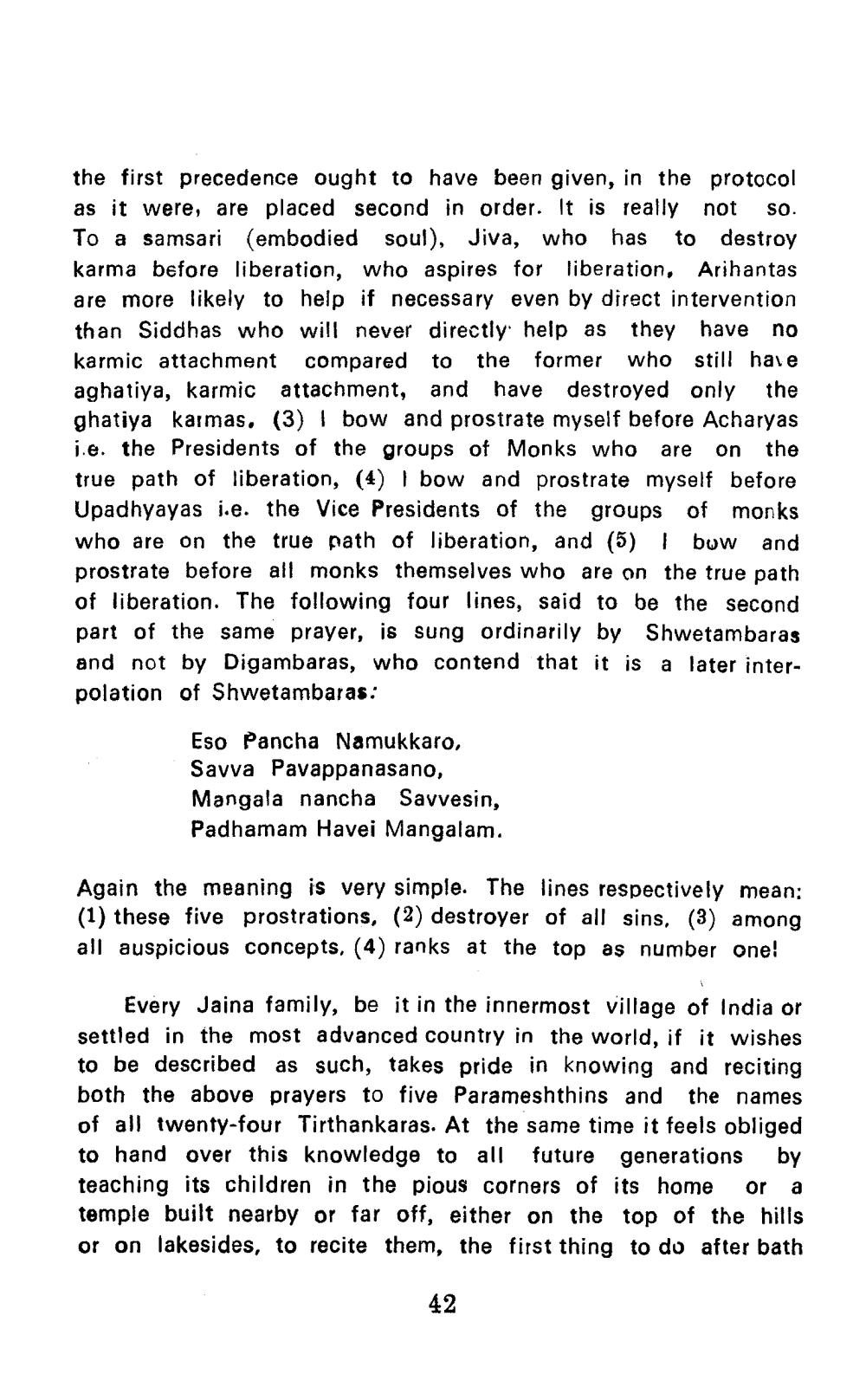________________
the first precedence ought to have been given, in the protocol as it were, are placed second in order. It is really not SO. To a samsari (embodied soul), Jiva, who has to destroy karma before liberation, who aspires for liberation, Arihantas are more likely to help if necessary even by direct intervention than Siddhas who will never directly help as they have no karmic attachment compared to the former who still have aghatiya, karmic attachment, and have destroyed only the ghatiya karmas. (3) I bow and prostrate myself before Acharyas i.e. the Presidents of the groups of Monks who are on the true path of liberation, (4) I bow and prostrate myself before Upadhyayas i.e. the Vice Presidents of the groups of monks who are on the true path of liberation, and (5) I bow and prostrate before all monks themselves who are on the true path of liberation. The following four lines, said to be the second part of the same prayer, is sung ordinarily by Shwetambaras and not by Digambaras, who contend that it is a later interpolation of Shwetambaras:
Eso Pancha Namukkaro, Savva Pavappanasano, Mangala nancha Savvesin, Padhamam Havei Mangalam.
Again the meaning is very simple. The lines respectively mean: (1) these five prostrations, (2) destroyer of all sins, (3) among all auspicious concepts, (4) ranks at the top as number one!
Every Jaina family, be it in the innermost village of India or settled in the most advanced country in the world, if it wishes to be described as such, takes pride in knowing and reciting both the above prayers to five Parameshthins and the names of all twenty-four Tirthankaras. At the same time it feels obliged to hand over this knowledge to all future generations by teaching its children in the pious corners of its home or a temple built nearby or far off, either on the top of the hills or on lakesides, to recite them, the first thing to do after bath
42




